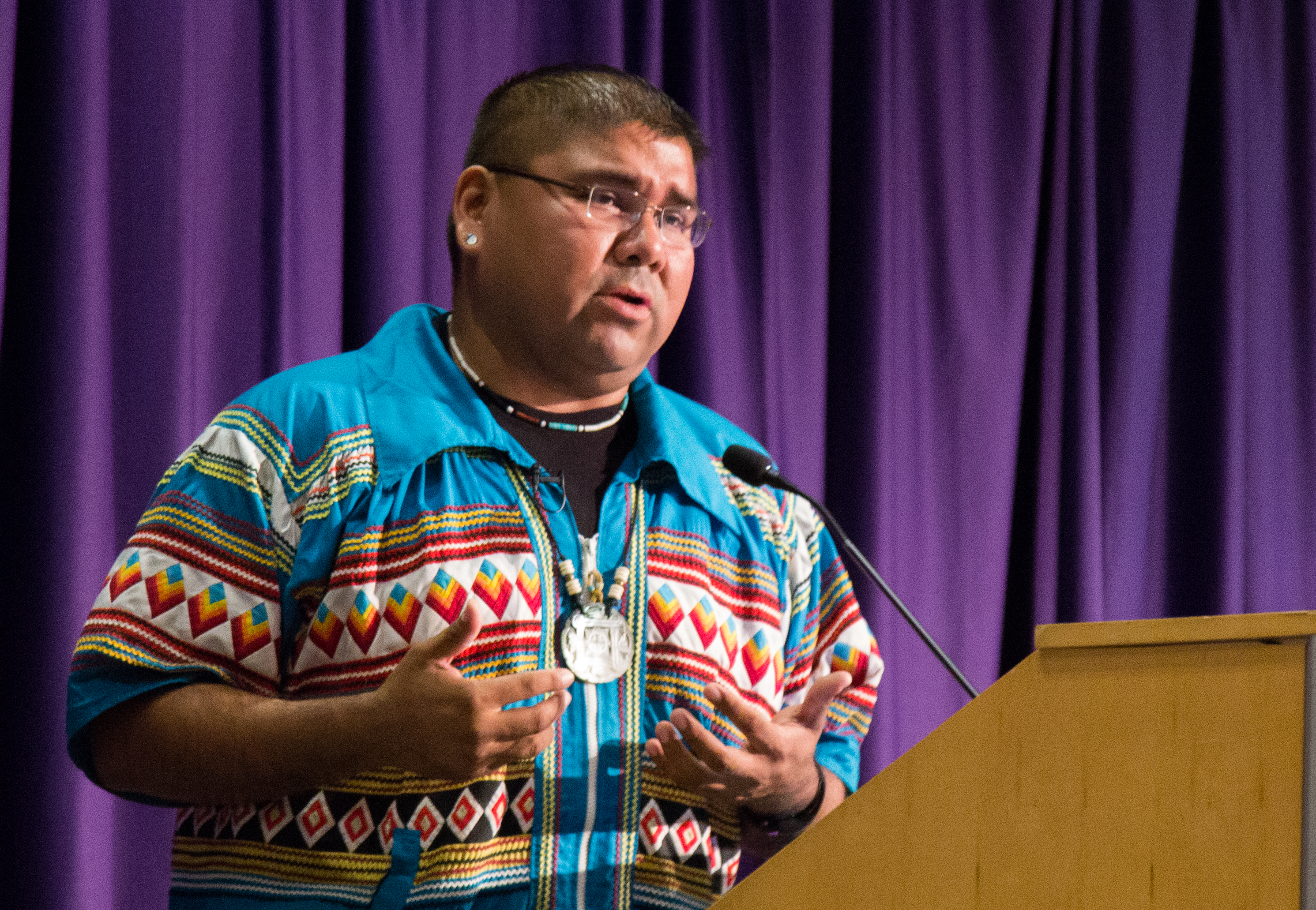February 21, 2017
Bringing Native American Voices to Campus
Organizer Scott Langston said upcoming panels are a matter of cultural and environmental awareness.

Chebon Kernell, a citizen of the Seminole Nation of Oklahoma, speaks at TCU's inaugural Indigenous Peoples Symposium, October 3, 2016. Kernell is also Executive Secretary for Native American and Indigenous Ministries of the General Board of Global Ministries for the United Methodist Church, as well as a traditional Seminole ceremonial leader. (Photo courtesy of Sam Bruton/TCU360)
February 21, 2017
Bringing Native American Voices to Campus
Organizer Scott Langston said upcoming panels are a matter of cultural and environmental awareness.
Three Native American environmental activists will visit TCU on February 28 to discuss the controversial Dakota Access Pipeline. They are participants in a panel hosted and moderated by Scott Langston, lecturer in religion. The forum is part of an ongoing series of events focused on Native American perspectives, including the inaugural Indigenous Peoples Day Symposium in October 2016.
The three panelists, Chebon Kernell, Henrietta Stands and Kechina Nelson, are all water protectors, the name an environmental movement gave itself in response to concerns about the Dakota Access Pipeline’s potential contamination of Lake Oahe. The lake is the primary water source for the Standing Rock Sioux of North and South Dakota.
Chebon Kernell is a ceremonial leader for the Seminole Nation of Oklahoma and executive secretary for Native American and Indigenous Ministries of the General Board of Global Ministries for the United Methodist Church.
The other panelists are both Oglala Lakota Mothers. Henrietta Stands is studying to become a counselor for drug addiction, and Kechina Nelson is currently preparing for a career as a nurse.
Langston wrote in an email that the panel will “discuss and clarify basic information about the Standing Rock Sioux and the pipeline.” Discussion will include the purpose of constructing the pipeline, why the Standing Rock Sioux are opposing the project, and why so many other Native American tribes are supporting the protest.
Dakota Access, a subsidiary of Energy Transfer Partners, is building the 1,168-mile pipeline that will transport over half-a-billion barrels of crude oil per day from North Dakota to Illinois. Part of the pipeline crosses Lake Oahe and comes within a half-mile of the Standing Rock Sioux Reservation, which is located on the border between North and South Dakota.
The pipeline’s close proximity to the reservation created worries about potential damage to Native burial sites and other historical locations. The issue over a small fraction of the pipeline project has brought the entire project under scrutiny. Protestors’ concerns include the project’s overall ecological impact and its potential to contaminate water sources.
Native Americans from across the nation have joined the tribe in protest against the construction of the pipeline. The protest has become one of the largest Native American movements in U.S. history.
At TCU, the panelists will share their reasons for getting involved in the protest. In an email, Scott Langston wrote that the panel would focus on “water, energy, sustainable lifestyles and economies, tribal rights and sovereignty, and sacred lands.”
The water-rights event is the first of three Native American panels planned for the semester. The next two will focus on the relationship between spirituality and health through the views of Native American women.
Langston said he believes the events provide the perfect opportunity to gain a better understanding of Native American perspectives. “It is not a protest or rally,” he said. “But instead an opportunity to educate ourselves.”

Your comments are welcome
Comments
Related Reading:
Night to Remember
The inaugural Black Excellence Gala highlighted contributions of students, faculty and alumni to TCU and the community.
Expanding Horizons
TCU brings new areas of study to its fast-growing student population.